
Baseball fans are used to receiving swag when stadiums host regular ‘promotion nights’, from bobble heads to drink coupons. But on this day in 1979, the Chicago White Sox lured crowds with a much different proposal — come to a double-header at Comiskey Park and witness crates of disco records get blown to pieces in between games. Chaos and rioting ensued, and many historians and disco artists feel the incident was steeped in homophobia and racism.
Disco was wildly popular in the late ’70s and deeply rooted in minority communities, including gay nightlife culture. Artists like Donna Summer, ABBA and Sylvester regularly pumped through the speakers at gay bars and clubs. At the same time, there was a backlash against the genre from rock fans who felt it was somehow ruining music.
Related: WATCH: Keiynan Lonsdale pays an uber-sexy tribute to the queer disco gods
When Chicago’s WDAI-FM switched from rock to disco and DJ Steve Dahl got fired in 1978, Dahl became something of a folk hero for disco haters. White Sox owner Bill Veeck and his son saw an opportunity to harness the musical tension, partnering with Dahl for what would be the strangest night of baseball anyone had ever witnessed.
How about we take this to the next level?
Our newsletter is like a refreshing cocktail (or mocktail) of LGBTQ+ entertainment and pop culture, served up with a side of eye-candy.
Dubbed “Disco Demolition Night”, the event not only sold out the 50,000 seat stadium, it drew an additional 20,000 disco haters who mobbed outside the ballpark and eventually stampeded their way inside. Attendees were told anyone who brought a disco record to the ballpark to blow up would be admitted for 98 cents.

The crates soon overflowed with records, many of which weren’t even disco, according to a former Comiskey Park usher. He told The Guardian in 2019 that many attendees simply brought “anything made by a Black artist.”
With nowhere to put their much-hated albums (why did they own them in the first place?!), folks in the stands started throwing them onto the field instead, prompting the first game to be paused several times. They also started throwing bottles, firecrackers and lighters — a sign in retrospect that things would soon turn out of control.
After the game concluded, it was time for the big boom. Dahl took center stage along with the overflowing crates, and the ensuing explosion was enough to blow a huge hole in the field as shards of vinyl flew skyward.
Related: Of course a radio station called The Eagle has the perfect way to silence homophobes
The blast triggered some fans’ worst instincts, and 5,000 to 7,000 attendees rushed the field in a mass riot. Equipment was destroyed, bases were stolen, and soon a giant bonfire blazed on the field. Police arrived in riot gear and ultimately arrested 39 people for disorderly conduct.
With no functioning field left to play on, the White Sox were forced to forfeit their second game.
Noted rock critic Dave Marsh of Rolling Stone wrote at the time that Disco Demo was “your most paranoid fantasy about where the ethnic cleansing of rock radio could ultimately lead. … White males, 18 to 34, are the most likely to see disco as the product of homosexuals, Blacks and Latins.”
Dahl has denied the claims.
Here’s radio coverage of the debacle, along with video footage from the stadium:



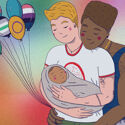


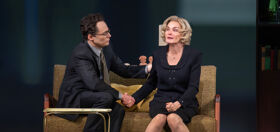

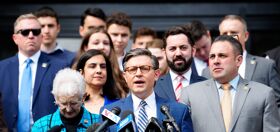
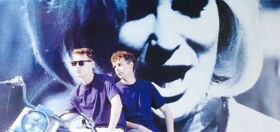


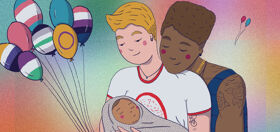




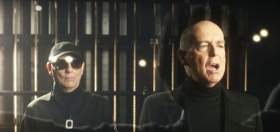


tallskin4
Ah, this famous display of anti gay hysteria oftentimes appears in gay histories of the USA in documentaries shown in the UK. But I hadn’t realised it wasn’t just anti gay but was also a fierce expression of racist hate too, since so many disco artists were black!
Kangol2
It’s the United States, so most things like this that happen usually have a racial/racist angle.
Why do you think there’s such hysteria about teaching the truth of US history, including about chattel slavery, the brutal period after Reconstruction, etc., with it being mislabeled “Critical Race Theory” (CRT)? It’s because the fanatics don’t want to deal with the truth, which is well-documented.
still_onthemark
‘Rock Against Racism (RAR) was a political and cultural movement which emerged in 1976 in reaction to a rise in racist attacks on the streets of the United Kingdom and increasing support for the far-right National Front at the ballot box. Between 1976 and 1982 RAR activists organised national carnivals and tours, as well as local gigs and clubs throughout the country. RAR brought together black and white fans in their common love of music, in order to discourage young people from embracing racism. The musicians came from all pop music genres, something reflected in one of RAR’s slogans: “Reggae, soul, rock’n’roll, jazz, funk and punk”. The movement was founded, in part, as a response to racist statements by well-known rock musicians such as Eric Clapton and David Bowie.’ – wikipedia
bachy
It is astonishing how a musical art form can signal cultural evolution and generate such intense political discord. Art has enormous power!!!
monty clift
What a bunch of degenerate losers.
CNY1983
then they had an encore on jan 6th in washington, dc.
JeffBaker
I was around in the 70s. I was in college when this happened. I don’t think it was as much homophobia and racism as it was the attitude that disco was crap!
Kangol2
The participants themselves made clear it was “homophobia and racism.” Did you even read the article? Wake up!
Dave Dixter
“Disco in America” came out of North American and European artists of all persuasions and colors around 1972/1973 going by years in my 45 rpm records. Gays were having too much fun and sex with all the dancing and the “others” were jealous. In fact, the huge He & She dance bar in West Palm Beach back lastes a few years, closed, then turned gay in 1975 and became Le Caberet where I became a DJ. The Chi-town blowing up of records were hopefully the really bad ones that nobody would play anywhere and thought to be vapid & pointless otherwise. It seemed to fueled the fire for more dance music which blossomed after the Mariel Boat Lift in 1980. I spun records until 1979 then moved to Fort Lauderdale to fu*k around, dance and finally meet my husband of 25 years this January. The rest is history!
Kangol2
One of the ironies of this protest at Comiskey Park is that disco became a mainstream phenomenon in the US and other Western countries in part through Hollywood’s intervention, particularly with the film Saturday Night Fever, based a fictional account of a Queens disco (he mostly made up everything in it) by British journalist Nik Cohn. The article and film took what was a mainly Black, Latino and White gay musical and dance scene, and recalibrated it for a young, straight White American audience. Straight White young people did of course listen to and visit disco clubs before SNF, but the film, based on the fake story, turned into a cultural sensation, making John Travolta a superstar, and spreading the music and scene far and wide. Its roots, however, were still too much to take for many people like the homophobic, racist ones raging at Comiskey Park that day, as they made clear.